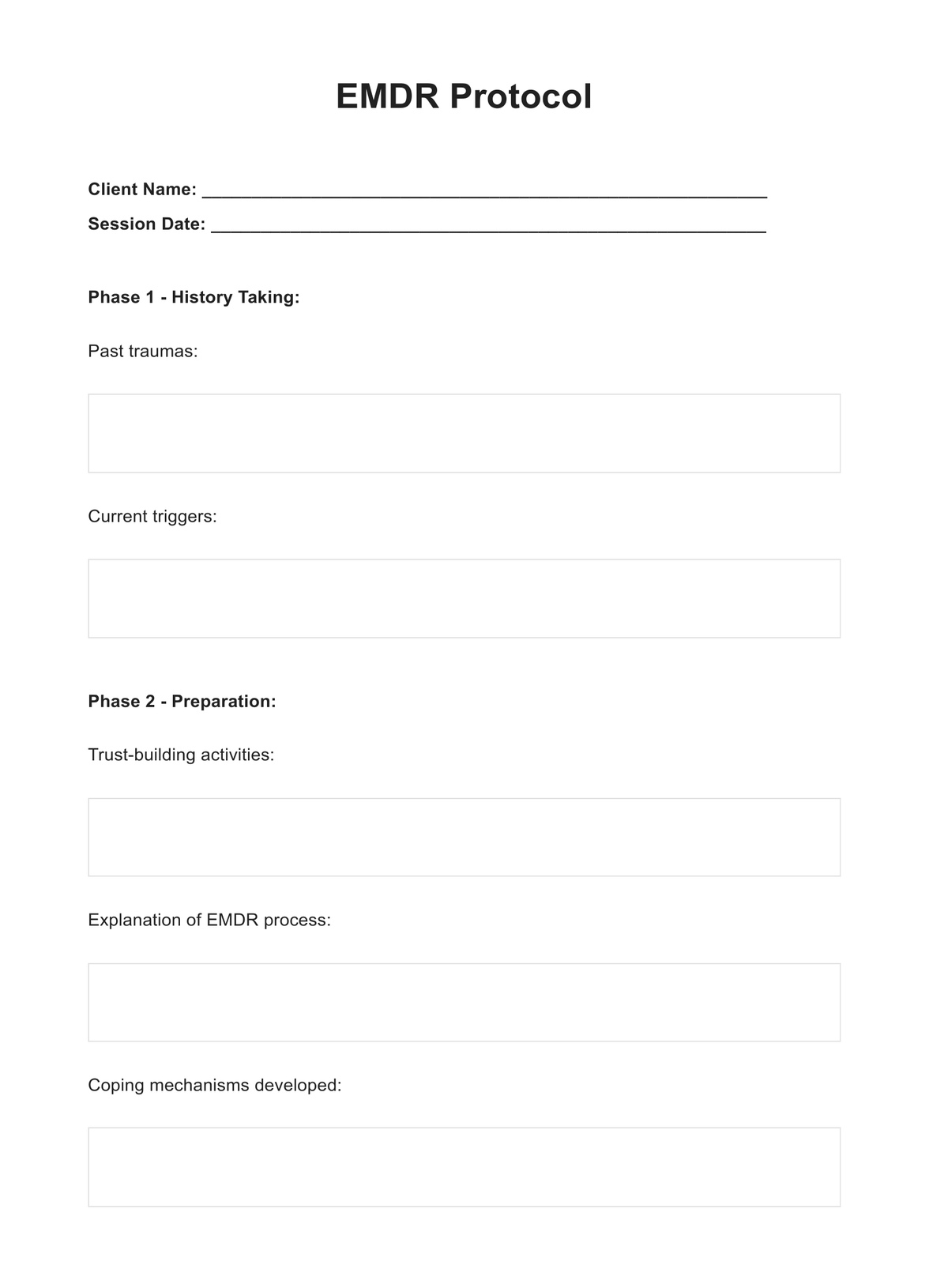The EMDR Protocol is used by trained mental health professionals, including psychologists, psychotherapists, and counselors, to help clients process traumatic memories and reduce psychological distress.

EMDR Protocol
Unlock the potential of EMDR protocols with a user-friendly and secure app. Enhance trauma therapy outcomes through structured, effective treatment.
EMDR Protocol Template
Commonly asked questions
The EMDR Protocol is typically used when treating individuals who have experienced traumatic events and are suffering from PTSD, anxiety, depression, and other trauma-related disorders.
The EMDR Protocol is used in a structured eight-phase approach, including history taking, preparation, assessment, desensitization, installation, body scan, closure, and reevaluation. It involves bilateral stimulation, such as eye movements, taps, or tones, while the client focuses on traumatic memories.
EHR and practice management software
Get started for free
*No credit card required
Free
$0/usd
Unlimited clients
Telehealth
1GB of storage
Client portal text
Automated billing and online payments











